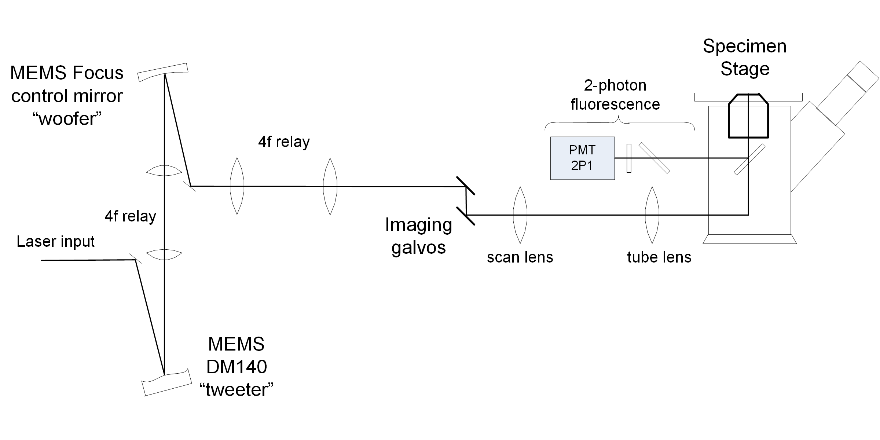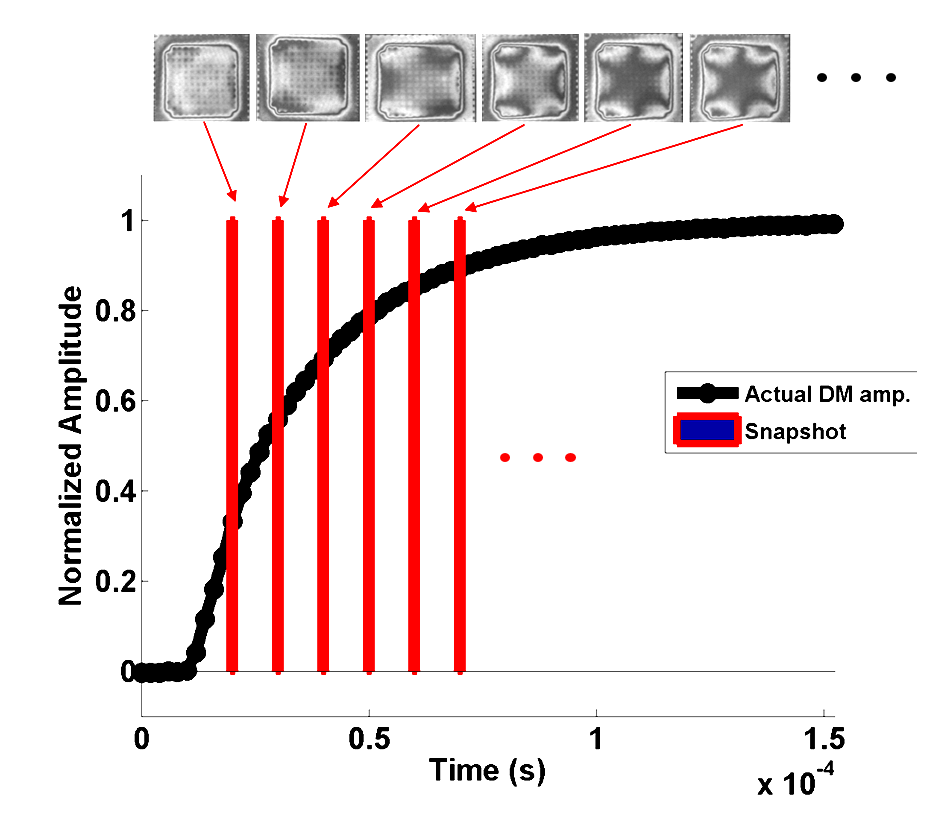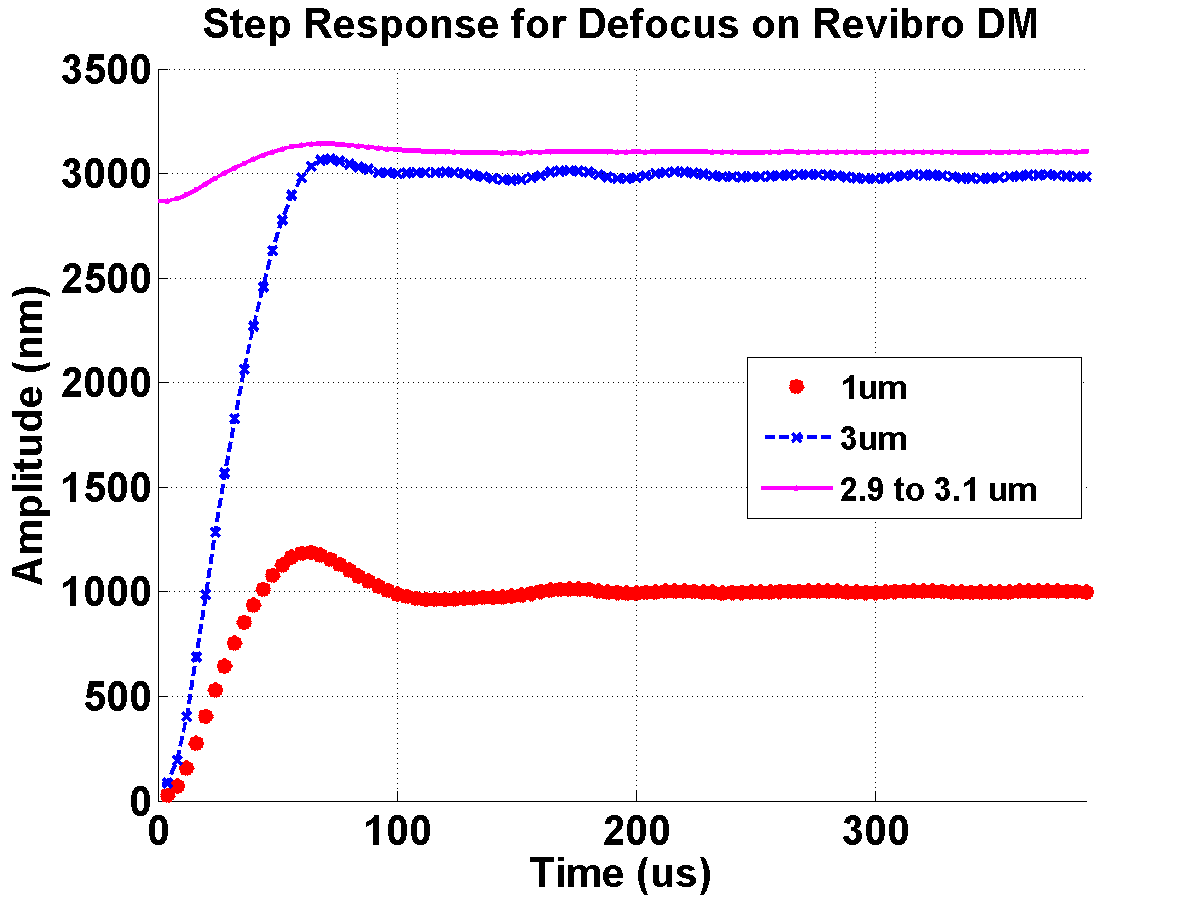Active/Adaptive Scanning Laser Microscope

The Active/Adaptive laser scanning microscope simplified diagram.

Higher order aberrations can be corrected with multi-actuator mirrors. Several aberration modes are shown as false-color height maps on a Boston Micromachines Multi-DM continuous membrane mirror with 140 actuators.

For on-the-fly correction, these mirrors must be fast. Using stroboscopic illumination, we can measure fast dynamics for our aberration and focus control mirrors. Here we show the evolution of the step response of a shape to correct trefoil, on a Boston Micromachines Multi-DM mirror.

Large mirror deflections are needed for focus control. The Revibro Optics focus control mirror can provide up to 15 microns of deflection, and with optimized damping it can respond with a step response of just a few tens of microseconds.
Funding support:
NSF award 1338133 (Major Research Instrumentation development award)
People working on this project
Chris Zhang – Ph.D. student
Warren Foster – Undergraduate ECE Student
Ryan Downey – Undergraduate ECE Student
Chris Arrasmith – Research engineer
Project Goals
We are developing a new microscope with innovative active and adaptive optics that will advance the state-of-the-art for scanning laser microscopy of thick living tissues or intact animals. Two deformable membrane devices, one dedicated to fast focus and low-order spherical aberration correction, and the other providing fast correction of higher order and specimen-induced aberrations, will deliver diffraction-limited performance throughout a three dimensional volume of tissue.
The project develops hardware, control algorithms and the necessary user interface to provide agile, electronically controlled 3D imaging for x-y, x-z or arbitrary trajectory scanning. The innovation will apply equally to confocal and two-photon fluorescence microscopy, the two dominant technologies that are used for high numerical aperture thick tissue microscopy. The resultant active/adaptive confocal and two-photon microscope will be housed in a shared-use imaging facility, where it will be maintained and used for research and to support cross disciplinary education of the next generation of biophotonics instrumentalists.
A further goal of the project is development of human resources through education of undergraduate and graduate students in engineering, and in particular to give those students exposure to and experience with challenging problems at the interface between engineering and the biological sciences.
Publications
Christian C. Zhang, Warren B. Foster, Ryan D. Downey, Christopher L. Arrasmith, David L. Dickensheets, “Dynamic performance of MEMS deformable mirrors for use in an active/adaptive two-photon microscope,” Proc. SPIE 9717, (February 28, 2016).
